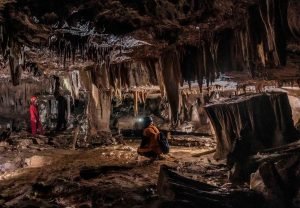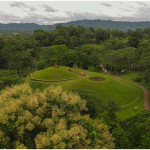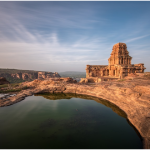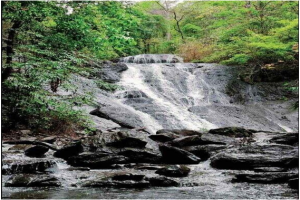BY TTT NEWS SERVICE
KOLKATA, 2 OCTOBER 2022
The Mawmluh Cave, which is locally called as ‘Krem Mawmluh’, situated at a hamlet, Mawmluh , which about 3.5 kilometres away from Cherrapunjee bus stand in Meghalaya has been selected as one of the first 100 IUGS sites in the world by the International Union of Geological Sciences (IUGS) of UNESCO.
An elated the Chief minister of Meghalaya, Mr. Conrad Sangma tweeted , “ Mawmluh Cave in Sohra, Meghalaya known for the Meghalayan Age has been selected by @theIUGS@UNRESCO as one of the ‘FIRST 100 IUGS GEOLOGICAL SITES’ in the world.”
He further tweeted , “ IUGS 60th Anniversary Event in Zumaia, Basque Coast UNESCO Global Geopark (Spain) will declare The First 100 IUGS Geological Heritage Sites selected from 181 candidate sites from 56 countries.”

A number of researchers, scientists and geologists have researched inside the cave for many years and have found huge stalactites and stalagmites. The stalagmite found inside Mawmluh cave, located at an elevation of 1,290 metres, made it into the Geologic Time Scale.
The Mawmluh Cave is a geological treasure field, where rainwater has been slowly dripping from the ceiling in the same spots for more than thousand years. With each drop of water, minerals in the water accumulate on the ground below, growing into calcium carbonate towers over the years and are known as stalagmites.
These stalagmite records from monsoon regions, are believed to be vital for understanding past variability in the global climate system and also the underlying reasons for this variability.
Scientists and researchers from Vanderbilt University in the USA studied the last 50 years of growth of a stalagmite from Mawmluh Cave in Meghalaya, an area credited as the rainiest place on earth.
Their study found an unexpected connection between winter rainfall amounts in northeast India and climatic conditions in the Pacific Ocean.

Therefore, stalagmites from Mawmluh Cave and the surrounding regions, indicates the recurrence of intense, multiyear droughts in India over the last several thousand years, the research found.
The Mawmluh Cave, which spans around 4,500 meters, is the fourth longest cave in the Indian subcontinent.
FEATURES :
Krem Mawmluh is the fourth longest cave in the Indian subcontinent, with a total length of almost 7 kilometres of cave channels. The cave’s entrance is at a height of 10 feet above sea level. The stalagmite structures and other rock formations seen inside Mawmluh Cave are well-known.
A pool may also be seen inside the cave, which was produced as a result of five distinct rivers finding their way inside.
The entryway was extremely tight, and getting inside required a lot of squeezing.
During monsoons, the cave has streams running through it, and some parts of it are entirely inundated.
The cave is too deep, with tunnels, numerous types of calcite formations, vast caves, waist-deep pools, a few metres of belly crawling, and a few climbs. In addition, just 1/4 of the cave receives sunlight, leaving the rest of the cave in darkness.
SCIENTIFIC CONCLUSION
The stalagmite from Krem Mawmluh, a seven-kilometer-long limestone cave in Sohra, has helped prove the existence of a 200-year-long drought that occurred after the Ice Age around 4,200 years ago. To describe this time period, the term Meghalayan Age was coined. Many civilisations around the world were destroyed by the drought, including those in Mesopotamia and the Indus Valley.
Timings : 7.30 AM to 4 PM.
IUGS 60th Anniversary Event in Zumaia, Basque Coast UNESCO Global Geopark (Spain) will declare The First 100 IUGS Geological Heritage Sites selected from 181 candidate sites from 56 countries.@narendramodi @kishanreddybjp @JoshiPralhad @GeologyIndia
— Conrad Sangma (@SangmaConrad) October 1, 2022
Advertisement:



































Add Comment